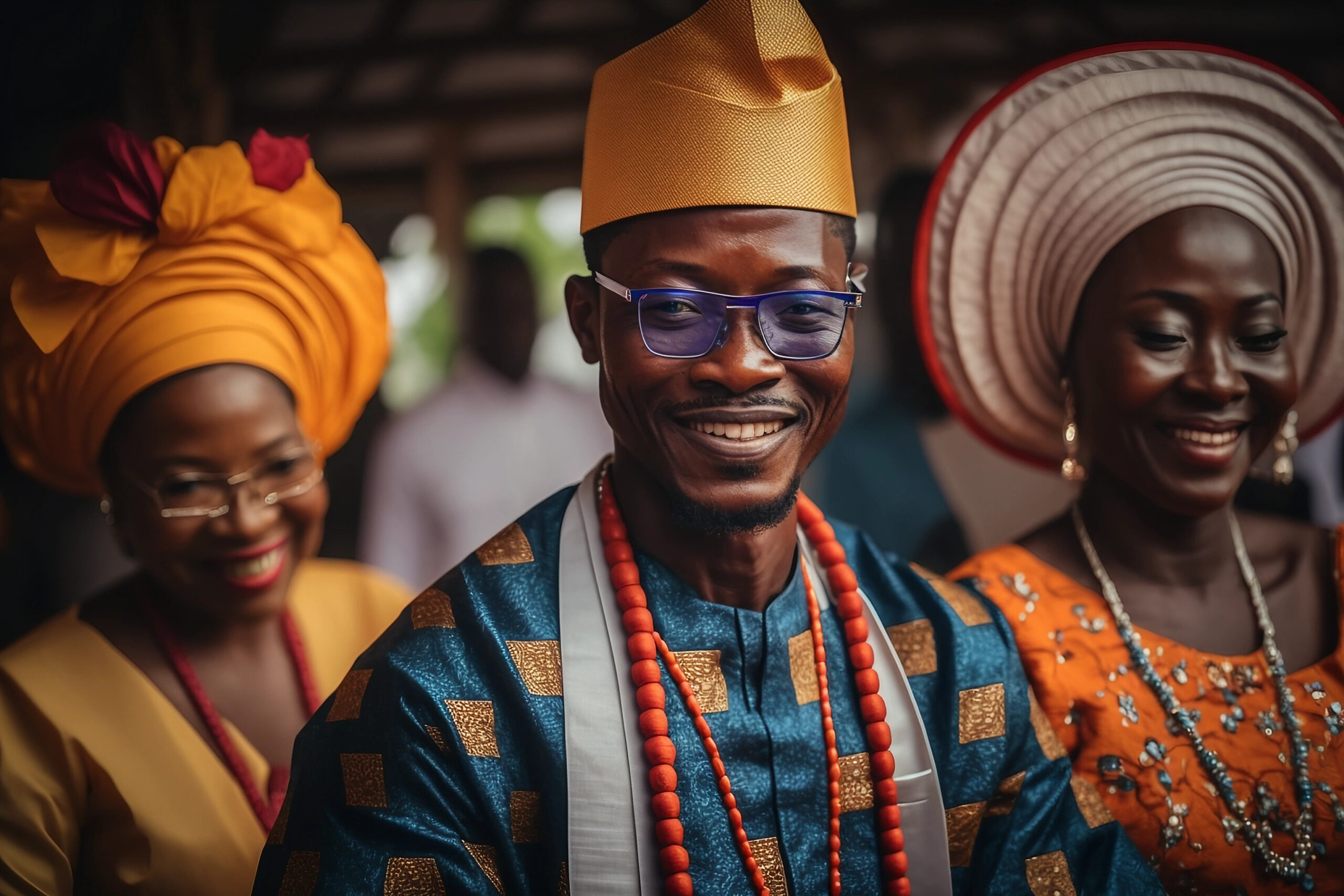After their migration from Egypt, the ancestors of the current Edo Empire settled in Southeastern West Africa and established the Benin Kingdom. Benin City, the origin of all Edo people is surrounded by its historical moat as a defensive barrier. The outer wall, with a radius of about 28 miles was built by Oba Oguola to keep his formidable enemy, Akpanigiakon outside the empire. The second inner wall was dug by Oba Ewuare the Great to prevent the people from fleeing the kingdom as a result of his inhumane laws, much of which he later repealed. The resultant depopulation would had led to weaknesses in various areas.
The Edos were very proficient bronze casters and great warriors. Royalty in the Edo kingdom was unique and sacred from the early days. The Ogiso dynasty was the first of two dynasties and produced about 31 Ogisos between 900 and 1200 AD. The original name of the kingdom was Igodomigodo named after its king Igodo who was the first Ogiso. The word Ogiso which means king of the sky came about as a result of the king’s greatness.
During the last Ogiso’s reign the Benin kingdom underwent a traumatic event which almost brought about its collapse. History states that the last Ogiso, whose name was Owodo, was unable to bear children. However, one of his wives whom he had married while he was a prince had an only son named Ikaladeran. After many years the other wives worried about their inability to bear any children. Therefore, they consulted an oracle and were told that the king’s only son, Ikaladeran, was responsible for their infertility and had to be sacrificed to the god of fertility. After much pressure on the Ogiso from his wives, he yielded and ordered his guards to sacrifice Ikaladeran outside the capital city. However, the guards set him free and encouraged him to flee, accompanying him in the process. After much wandering, they finally settled in Ile-Ife (which means “I escape to safety”). Ile-Ife became the birthplace of the Yoruba kingdom and Prince Ikaladeran assumed the name Oduduwa (which in the Edo language means “I have found the road to prosperity”)
The Ogiso’s wives remained childless, and upon his death there was no heir to the throne. A search was mounted to locate Ikaladeran after it was revealed that he had escaped being sacrificed. Now the Oduduwa of Ile-Ife, Ikaladeran declined an invitation to assume the throne in Benin City, citing the complicity of the elders in the decision to have him sacrificed, After much pressure and fearing for his life, Ikaladeran sent his son Oranyminyan to assume the throne in Benin instead. Oranyminyan did not like Benin City and subsequently returned to Ile-Ife. He later went on to find the Oyo Empire and became the first Alafin of Oyo. On his departure from Benin City, Oranyminyan left his son, Eweka, who founded the second dynasty and became the first Oba; the current Oba Ewuare, the second is the 40th king of the second dynasty of Benin Kings.
This short history of the Benin Kingdom is presented here courtesy of Dr. Kienuwa Obaseki of Detroit, Michigan and updated in 2021 by Osaze Sam Igbe.
1. Uzo – antelope
2. Evuato – grasscutter
3. Ọkhaẹn- porcupine
4. Ẹrokhi- chameleon
5. Ẹruvbọ – turtle
6. Orere – Hare
7. Ọfiotọ – Rabbit
8. Esi – bush pig
9. Ubidọn – cheetah
10. Oduma- lion
11. Ẹkpẹn – leopard
12. Atalakpa – tiger
13. Akpakomiza – hyena
14. Elekhukhu- pigeon
15. Ẹghodin – kite
16. Ahuara – hawk
17. Akhae – weaver bird
18. Idu – dove
19. Asẹsẹ – sun bird
20. Ẹrhuẹ- deer
21. Akpakpahuangan – scorpion
22. Ozi – crab
23. Akuragha – panda
24. Elẹdẹ – pig
25. Egui – tortoise
26. EKpẹkpẹyẹ – duck
27. Ugomugo – ostrich
28. Ọkhọkhọ-fowl
29. Ẹnyẹ – snake
30. Owọnwọn – theocat
31. Eni – elephant
32. Ọsa – gorilla
33. Emẹ – monkey
34. Ọtan – squirrel
35. Ofẹn – rat
36. Ẹguẹn- bat
37. Edi-bush dog
38. Abọn – civic cat
39. Ologbo – cat
40. Umiamwẹzẹ – Agama lizard
41. Ozikpalọ – lizard

